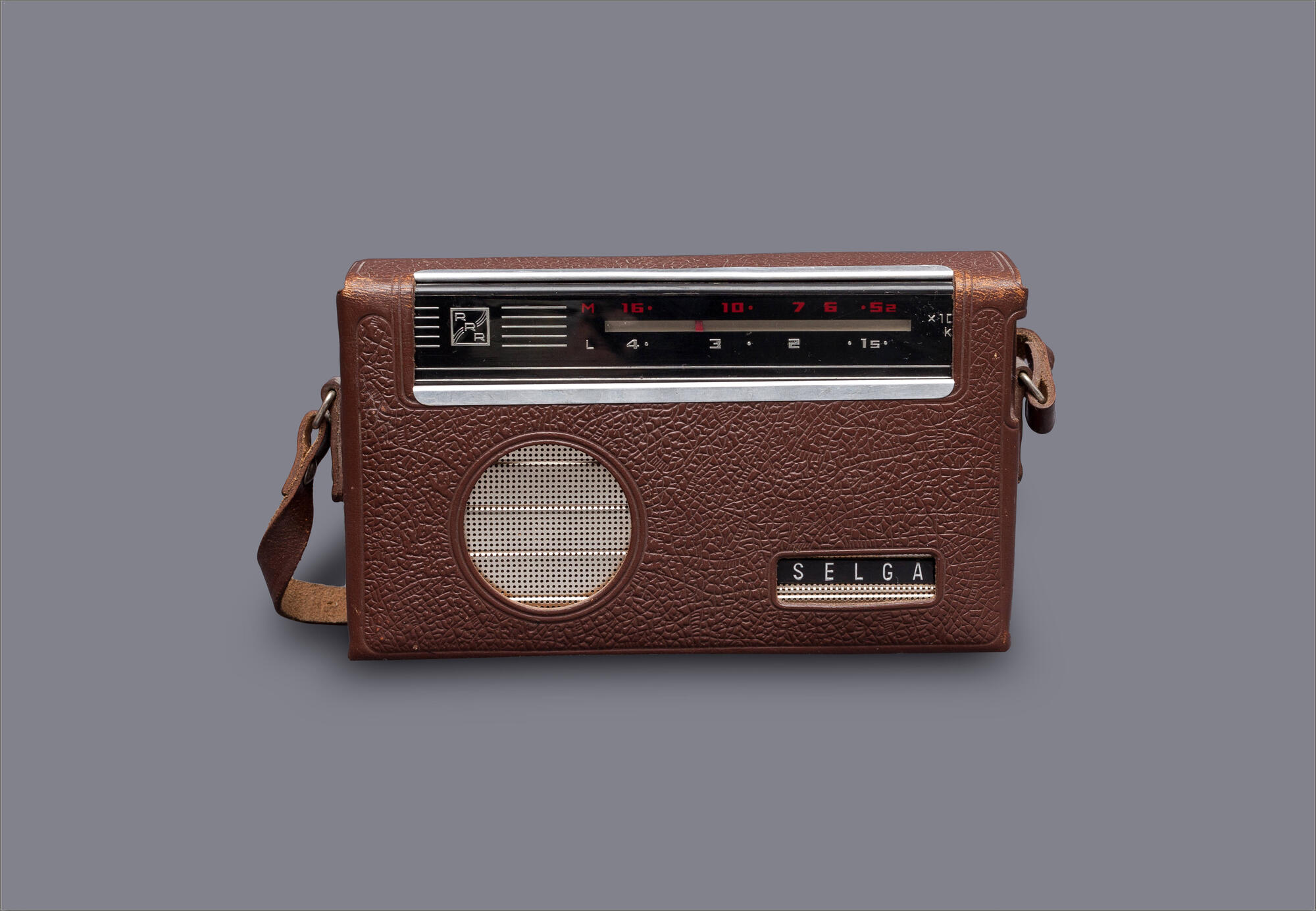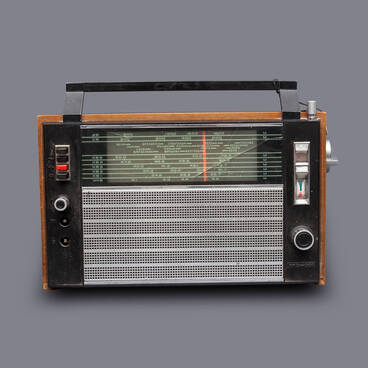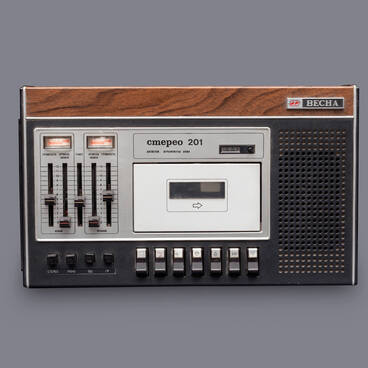The Voronezh Radio Factory was one of the first in the USSR to start making transistor radios within a small-scale pilot series, with the manufacture soon overtaken by the Samara-based Znamya Truda radio factory. The novelty products were put into mass production in 1957 when the Syurpriz transistor radio was introduced.
The products of the Latvian radio factories, including the Popov Radio Factory in Riga, were very popular in the USSR and beyond. Here, in the early 1960s, a portable transistor radio receiver named the Selga (the Latvian for “open sea”) was developed. The first such radio receiver came off the assembly line in 1963.
With the launch of production, a laboratory was created in the transistor radio shop to analyze and correct the design flaws. The receiver was upgraded: by the end of 1964 the design of the case and the scale was modified. Inscriptions were now made both in Russian and English: the Selga was exported to a number of countries, yet its export versions would bear the names Convair, COMIX, or VEGA instead.
The side panel of the radio was equipped with jacks for headphones and an external antenna. Various color combinations were provided for the case (that could be black, blue, or red) and the rear cover (white or mint green).
The Baltic factory also made a number of several “jubilee” radio designs — those released specifically for the 25th anniversary of the Latvian SSR, the 50th anniversary of the 1917 October Revolution, and the 100th anniversary of Vladimir Lenin. The radio came with a leatherette case and a strap.
The Selga radio could be powered from a Krona-type 9-volt battery, six AA batteries, or a 7D-0,1 rechargeable battery with an AC charger. It would last for 25 hours in the former two cases, or up to 12 hours when powered from a rechargeable battery.
In 1970, the factory began producing the Selga-402, a year later the 403rd model was introduced. In 1973, the Riga factory began manufacturing the Selga-404, which differed from its predecessors in power output. The 405th model was comparatively less innovative, though no less popular: seven million units were produced from 1977 to 1985.
The exhibit is a first-generation model that was donated to the museum by the committee of the All-Union Leninist Communist Union of Youth of Moscow State University in 1967, as evidenced by the donation inscription on the metal plate, which was attached to the radio.
The products of the Latvian radio factories, including the Popov Radio Factory in Riga, were very popular in the USSR and beyond. Here, in the early 1960s, a portable transistor radio receiver named the Selga (the Latvian for “open sea”) was developed. The first such radio receiver came off the assembly line in 1963.
With the launch of production, a laboratory was created in the transistor radio shop to analyze and correct the design flaws. The receiver was upgraded: by the end of 1964 the design of the case and the scale was modified. Inscriptions were now made both in Russian and English: the Selga was exported to a number of countries, yet its export versions would bear the names Convair, COMIX, or VEGA instead.
The side panel of the radio was equipped with jacks for headphones and an external antenna. Various color combinations were provided for the case (that could be black, blue, or red) and the rear cover (white or mint green).
The Baltic factory also made a number of several “jubilee” radio designs — those released specifically for the 25th anniversary of the Latvian SSR, the 50th anniversary of the 1917 October Revolution, and the 100th anniversary of Vladimir Lenin. The radio came with a leatherette case and a strap.
The Selga radio could be powered from a Krona-type 9-volt battery, six AA batteries, or a 7D-0,1 rechargeable battery with an AC charger. It would last for 25 hours in the former two cases, or up to 12 hours when powered from a rechargeable battery.
In 1970, the factory began producing the Selga-402, a year later the 403rd model was introduced. In 1973, the Riga factory began manufacturing the Selga-404, which differed from its predecessors in power output. The 405th model was comparatively less innovative, though no less popular: seven million units were produced from 1977 to 1985.
The exhibit is a first-generation model that was donated to the museum by the committee of the All-Union Leninist Communist Union of Youth of Moscow State University in 1967, as evidenced by the donation inscription on the metal plate, which was attached to the radio.






